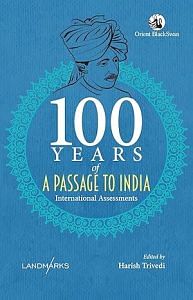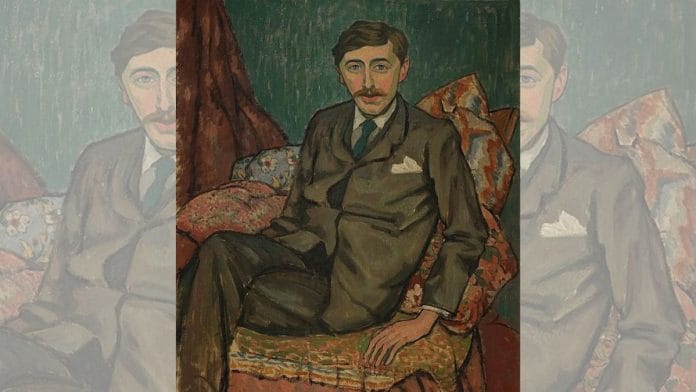The matter of religion, under a number of guises, lies at the heart of the novel. Ultimately this is not any of the three great religions present in the book, Islam, Christianity and Hinduism, though it is closest to the last and certainly beyond the nihilism of Mrs Moore’s response to the echo in the caves, which reflects something of Forster’s own belief – or rather unbelief – though it is far more than the rather tepid humanism of his later writings.
The Christian Mrs Moore finds in the ‘Boum’ of the cave that ‘the horror of the universe and its smallness [were] both visible at the same time’. In a different continent that was also riven by colonial cruelty, Kurtz, in Conrad’s novella The Heart of Darkness (1899), sees into the heart of things, uttering a cry that is no more than a breath, ‘The horror! The horror!’
A Passage to India can be read at many levels, but perhaps finally it is to be read as a myth. Characters remain largely within their stereotypes and this suggests a rather two dimensional, if still powerful, portrait of British India as its imperial sun begins to set and Indian nationalism grows.
Indeed, there is a sense of almost stock characters in Forster’s fiction, sometimes elaborated upon, so that Mrs Moore, for example, bears some resemblance to Miss Raby in the short story ‘The Eternal Moment’, published four years after A Passage to India.
A novel published seven years later, Edward’s Thompson’s Farewell to India (1931), a title which has a clear echo and reversal of Forster’s, was written with a far more substantial knowledge of the late years of Empire in India, and in some ways more rounded and complex (though also less interesting) characters, such that a contemporary Indian writer, Bhupal Singh, described Thompson as ‘more serious than Mr Forster and more fastidious’.
Certainly, Thompson provides a more accurate and more subtle portrait of Indian and British life in West Bengal at the end of the Raj, but Forster’s purpose (set in nearby Bihar) is quite different, ultimately more poetic. As literature, his novel is remembered while Farewell to India is almost entirely now forgotten.
Also read: Akbar’s treasury held glass vessels worth Rs 25 lakh. It came from Firozabad
In the Marabar Caves ultimately all things and all people are one, though each character’s reaction to it is quite different. Before the ill-fated journey to Marabar no one – neither Aziz nor the British residents – had actually been to the caves. It is left to the Hindu Brahmin Professor Godbole to describe them. In his words they are neither holy, nor ornamented – to the inquisitive gaze they present nothing extraordinary: nothing, and without god.
At the end of Adela and Mrs Moore’s visit to Fielding’s school, early in their stay in India, Godbole sings ‘the song of an unknown bird’. It is, says Godbole, a religious song, inviting Shri Krishna to come, but ‘the god refuses to come’: ‘“Oh, no, he refuses to come,” Godbole, perhaps not understanding her question. “I say to him, Come, come, come, come, come, come. He neglects to come”’.
Alongside the inscrutable Godbole there are endless references to the Christianity of the British Raj, reduced in Mrs Moore’s mind after the trip to Marabar to the religion of ‘poor little talkative Christianity’ whose great scriptural pronouncements only amounted to the wordless ‘boum’. An English nurse who speaks to Mrs Moore at the beginning of her visit to India affirms her liking for ‘chaplains’ (those clergymen who remain safely within the British quarter) but distrust of ‘missionaries’, expressed in the light of Mrs Moore’s, to her, shocking remark that a ‘native’ may go to heaven.
The Collector intervenes before anything further can be explained, but a few pages later the reader is introduced, indirectly, to two missionaries, old Mr Graysford and young Mr Sorley, ‘who lived out beyond the slaughter-houses, always travelled third on the railways, and never came up to the club’. There is something comic and slightly pathetic about these two missionaries. Essentially good men, they live in poverty and turn no one away.
Indeed, young Mr Sorley, ‘who was advanced’, would welcome even monkeys into heaven, ‘the mercy of God being infinite’. But with them also there are limits: ‘We must exclude someone from our gathering, or we shall be left with nothing’.
The irony of this is, of course, that that is precisely what Adela and Mrs Moore are left with in the cave – where nothing (and everything) happens.

This excerpt, written by David Jasper in ‘100 Years of A Passage to India: International Assessments’, has been published with permission from Orient BlackSwan. The book has been edited by Harish Trivedi.






